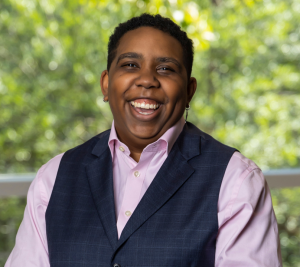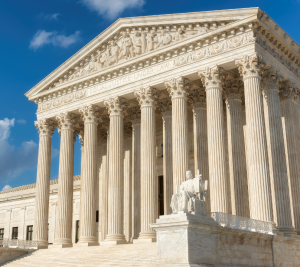By Olivia Robertson
Recent technological advancements and new players have shaken up various industries, like entertainment and transportation. Now, these same changes are affecting higher education in America. New research out of Vanderbilt Business uses Layton’s marketing systems theory to understand the disruptions of the academic system.

Jen Riley
“United States Education Structure is Under Stress: Exploring the Destabilization of Academia’s System Settings” emphasizes that while education leaders don’t directly control these changes, their decisions can impact the outcomes and structure of the U.S. higher education system. Co-authored by Jen Riley, Morgan M. Bryant, Kate Nicewicz-Scott, Amy Watson, and Tiffanie Turner-Henderson, the study aims to analyze how the U.S. higher education system deals with these disruptions. The authors discuss 3 primary power shifts influencing how education is marketed and provide a reference for academic leaders to make decisions and take action in response to these changes.
“Our work critically examines these shifts by intertwining historical perspectives with the demands of today’s evolving landscape, emphasizing the need for transformative change within higher education,” says Riley.
What is Layton’s theory of marketing systems?
Layton’s theory of marketing systems is a framework that looks at how changes in power, technology, or societal values act as catalysts, sparking a series of events in a system. This system involves the exchange of goods, services, or ideas. Once a catalyst occurs, opportunities and threats arise, and people or institutions respond based on self-interest, mutuality, and morality. The outcome is a transformation of the marketing system, affecting offerings and how it contributes to the community’s well-being. Layton emphasizes adapting to these changes to remain relevant and influential.
The authors discuss how the American Industrial Revolution was the “technological shock” that led to the transformation of higher education into what it is today. At the turn of the 20th century, many prominent American universities were established, focusing on applying science to industry needs. Now, higher education faces another revolution marked by technological, economic, and cultural changes. These shifts question the value of the exchange between society and U.S. higher education, leading to power shifts in various aspects. This tension pushes for a change in the types of educational offerings, causing traditional institutions and degrees to lose perceived and actual value.
“To remain relevant, higher education must evolve and adjust program offerings to fit current market needs,” says Riley. “Failure to evolve may lead to declining relevance and influence as society seeks greater value elsewhere.”
 What are the governance and political influences on higher education in the United States?
What are the governance and political influences on higher education in the United States?
Recent scandals like the ‘Varsity Blues‘ and partisan politics have eroded trust in college leadership with increased political influence over universities. This influence is exemplified by instances like former Senator Ben Sasse becoming president of the University of Florida amid protests. Political appointments in university boards have risen, and students’ contributions to university budgets have doubled in the past 40 years. Yet, despite reduced allocations, states maintain significant influence. Recent legislative actions target tenure, DEI initiatives, and expenditures. Supreme Court rulings have favored conservative positions, impacting affirmative action and race-conscious admissions, prompting calls to end similar programs at institutions.
Does accreditation matter in the U.S. higher education system?
Accreditation signals quality and legitimacy, particularly the AACSB designation for business schools. Maintaining this accreditation focuses heavily on faculty research, creating a disconnect with student-centric objectives. While being a great researcher doesn’t necessarily correlate with practical teaching, there is value in the research-teaching nexus, especially in experiential learning. However, institutional emphasis on research poses challenges. Public distrust in scientists has increased, impacting the perceived value of inflated tuition funding scientific research, and critics argue that research doesn’t necessarily benefit student learning, especially when faculty are juggling teaching priorities for paying students with expectations for research productivity.
“The current structure creates a tension between resource allocation and student success,” the authors write. “Considering the looming threat of a decline in prospective students due to a shrinking population, it is crucial to prioritize student outcomes and retention.”
How does macromarketing impact the desire for higher education in the United States?
Prior research indicates one macromarketing (big-picture, economic, and societal) effect of a successful higher education marketing system is the evidence of community quality improvement. However, Americans have lost confidence in the economic benefit of higher education, questioning its payoff, affordability, and access. Recent studies indicate a declining enthusiasm for college among Gen Z, with 50% believing a college degree is unnecessary. With the national birth rate decline since the 1960s posing challenges, there aren’t enough young workers to replace retiring Baby Boomers, threatening the historically counter-cyclical nature of the economy and demand for education. And, despite a growing need for skilled workers, many Americans feel that colleges and universities are not adequately preparing graduates for the workforce.
 How has competition, especially technological, affected U.S. higher education?
How has competition, especially technological, affected U.S. higher education?
Google, a key player in digital marketing, introduced Career Certificates as an affordable alternative to traditional degrees, making education more widely accessible. Google partnered with universities, shifting classroom responsibilities to external entities. By collaborating with universities, Google is a curriculum provider that bridges the gap between professors’ expertise and current industry practices. This partnership shifts traditional classroom responsibilities from professors to external, for-profit entities. Google’s approach, outlined in the company’s marketing materials, encourages faculty to provide “wraparound support” to a curriculum they did not participate in creating or delivering. Similar models are adopted by other companies like Ziplines Education, formerly GreenFig, which partners with prestigious institutions to support or replace traditional education.
Guild Education, a for-profit company, brokers employer-sponsored education benefits, directing millions of adult learners to selected programs. Industry leaders like Bloomberg and Salesforce offer branded certificates, emphasizing skills over degrees. Guild Education’s influence as a power player in education is significant, directing millions of credit hours. Despite its limited partnership with less than 1% of 4-year degree-granting institutions, it manages tens of millions of credit hours, establishing itself as a significant educational power player. Its focus on employer-sponsored adult learners positions Guild Education as a disruptive force. In turn, many companies, including Google, no longer require degrees for all hiring, focusing on skills and experience, further emphasizing the significance of Guild Education and similar opportunities.
The shift toward skills-based hiring and technology implementation in education is reshaping the value and demands of higher education. In addition to the presentation of one’s skills via certificate becoming more prominent and desirable, the pandemic accelerated the shift to online learning, emphasizing the need for educators to adapt to modern tools and experiential teaching methods. Additionally, COVID-19, leading to the switch to online learning, strengthened theories that traditional classroom learning environments were no longer sufficient, leading universities to show how they can provide value to in-person students, especially given the high price tag of higher education.
 Conclusion: How do Layton’s model and industry shifts affect higher education?
Conclusion: How do Layton’s model and industry shifts affect higher education?
The described changes place a significant responsibility on academia to make informed and strategic choices to stay relevant. Layton’s model emphasizes the need for adaptation, showcasing the unidirectional nature of the system setting arrow. Implementing simulations and modern technology may divide instructors, requiring a critical examination of traditional market system structures. Proposing innovative models that optimize self-interest, mutuality, and morality could make traditional institutions more adaptable. The suggestion of collaboration between professors and industry leaders could bridge the knowledge gap and decrease university overhead.
“This manuscript underscores the urgency for academia to evolve and address current challenges in a meaningful way,” says Riley.